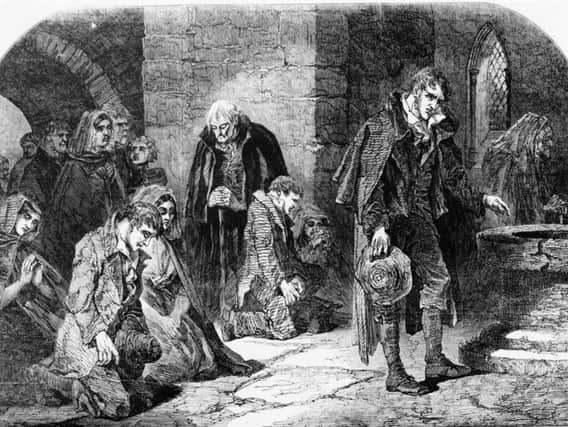Great Irish Famine - what the starving were eating


Approximately a million people in Ireland lost their lives to starvation and epidemic disease between 1846 and 1851 after the potato crop failed in successive years - estimated to be around one eighth of the population.
The loss of life was proportionately more destructive than the majority of modern day famines.
Advertisement
Hide AdAdvertisement
Hide AdScientific analysis of dental calculus – plaque build-up – of victims found evidence of corn (maize), oats, potato, wheat and milk foodstuffs.
The corn came from so-called Indian meal imported in vast amounts to Ireland from the United States as relief food for the starving populace.
They also discovered egg protein in the calculus of three people – more associated with diets of non-labouring or better off social classes.
Researchers analysed calculus on teeth from the human remains of 42 people, aged approximately 13 years and older who died in the Kilkenny Union Workhouse and were buried in mass burial pits on its grounds.
The study is a collaboration between researchers from the universities of Edinburgh, Harvard, Otago in New Zealand, York, Zurich, and the Max Planck Institute for the Science of Human History in Germany.
Dr Jonny Geber of the University of Edinburgh’s school of history, classics and archaeology, said: “The results of this study is consistent with the historical accounts of the Irish labourer’s diet before and during the Famine.
“It also shows how the notoriously monotonous potato diet of the poor was opportunistically supplemented by other foodstuffs, such as eggs and wheat, when available.
“The Great Irish Famine was one of the worst subsistence crises in history but it was foremost a social disaster induced by the lack of access to food and not the lack of food availability.”
Advertisement
Hide AdAdvertisement
Hide AdThe study is published in the Proceedings of the National Academy of Sciences of the United States of America.
It was funded by the Royal Irish Academy in partnership with the National Monuments Service, Wellcome, Johan and Jakob Söderberg’s Foundation, the US National Science Foundation and the Max Planck Institute for the Science of Human History in Germany.